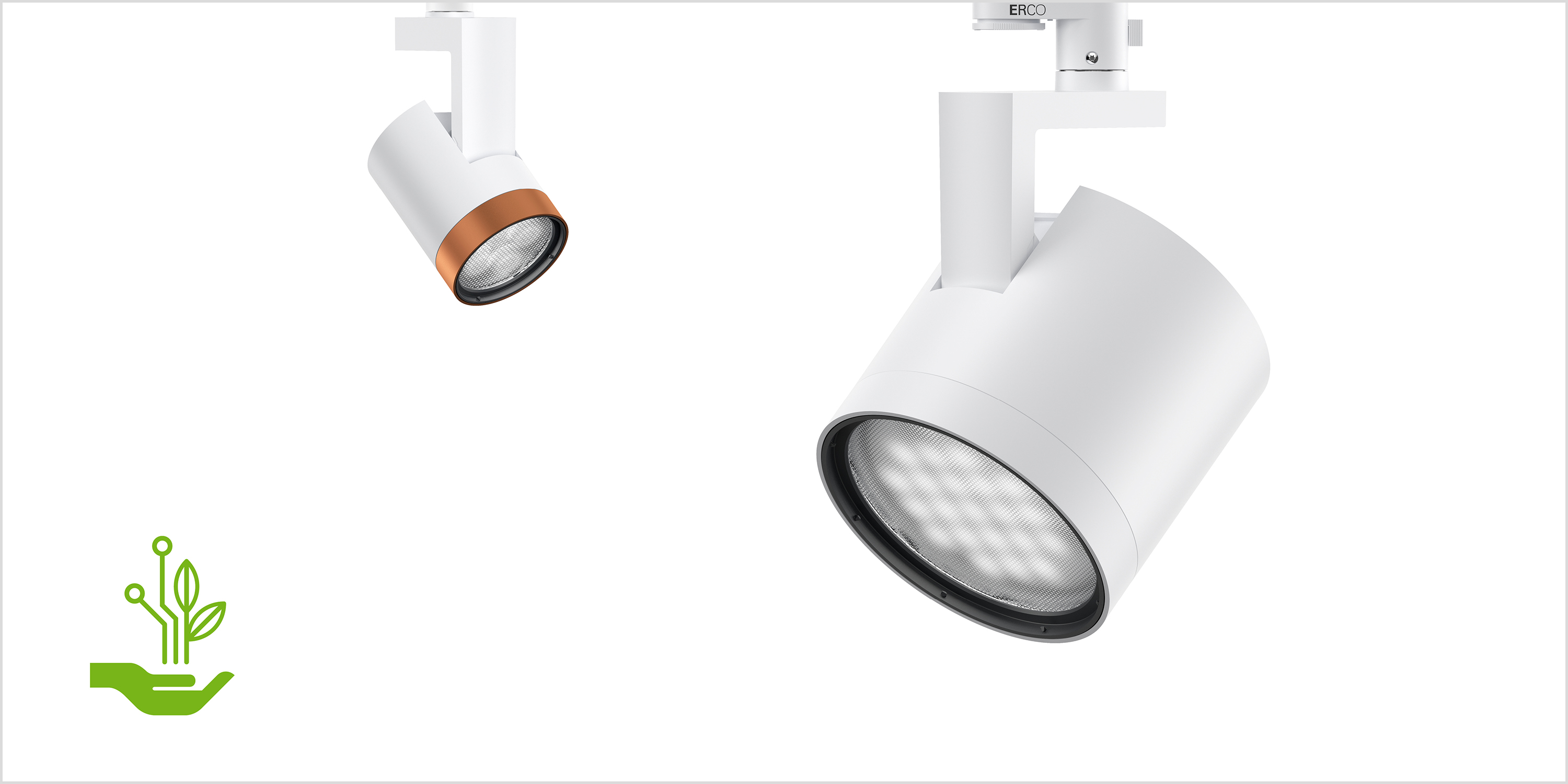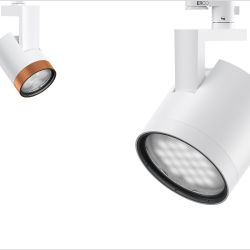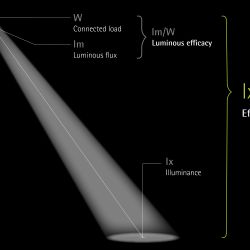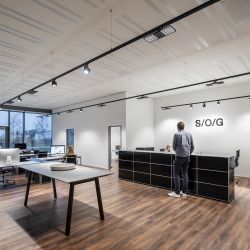
Download this article:
Lüdenscheid, September 2022. Energy is a valuable and scarce resource and its responsible use is one of the important tasks of our time. Construction and building management in particular require enormous capacities. It is here that the need for action for greater environmental and climate protection is growing, because according to the UN, these industries are responsible for almost 40% of global CO2 emissions. Architectural lighting can contribute significantly to achieving these objectives, because approximately 90% of the energy consumed in the life cycle of a luminaire comes from operation, not from the manufacture. This means to reduce energy consumption even more we need to further optimise the operation. However, merely the use of energy-efficient luminaires is not sufficient. After all, it is the effectiveness of a lighting system measured in lux per watt as well as its consistent orientation towards human perception that leads to improvements in the ecological footprint of buildings. The luminaire manufacturer ERCO sums up this understanding of sustainable lighting under the term "ERCO Greenology" and provides practical expertise for lighting design in the form of individual webinars and publications.
Human perception as a factor of sustainability
Lighting sustainably means using light specifically where it is needed – in other words, where human perception requires it. After all, we illuminate so that people can see: to view art, for specific visual tasks such as reading texts or working on computer screens at desks, and for providing orientation in public buildings by creating perceptual hierarchies with light.
We call the lighting design aspect behind this approach Human Centric Lighting (HCL). It has always been the basis for the development of lighting solutions at ERCO. One example is wallwashing, i.e. the uniform illumination of vertical surfaces. The development of dedicated wallwashers is based on the realisation that the visual perception of a room is primarily based on orientation to vertical surfaces. A uniformly illuminated wall creates a brighter impression of the room than a floor illuminated to the same level of illuminance. If 100lx are applied to the wall instead of the floor, the room appears three to five times brighter just because another surface is illuminated.
Luminaires with good glare control increase visual comfort and thus also visual performance at comparatively low illuminance levels – because the human eye is able to adapt to the targeted level of brightness without impairment. Another planning approach that can also be combined well with wallwashing is zoned lighting. Here, the first step is to analyse where people need which type of light. For example in offices light is directed towards the desks and circulation routes. In contrast to illuminating the entire room, energy consumption can be reduced by approximately 50%.
Why energy efficiency alone is not enough
Those wanting to illuminate a room not only have to plan carefully where and for which activities light is needed. The decisive question is: how much light actually reaches the surfaces relevant for human perception? It is thus more the effectiveness, meaning the illuminance achieved in lux/watt, that must be considered with lighting design, and less the efficiency of a luminaire expressed in lumens/watt.
In application, a combination of glare-free, targeted lighting is required along with lighting design complying with the principles of HCL. The key is to direct light exactly where it is needed for specific activities and where human perception requires it, whilst reducing it everywhere else. Energy is a scarce and expensive resource. This means that those planning with light must use light more effectively and also decide where energy is not needed. This approach can lead to a significant reduction in the connected load.
ERCO considers both metrics within product development: efficiency through the use of high quality LEDs and proprietary driver electronics as well as effectiveness through high-precision, in-house developed photometric systems. This is the only way to implement lighting concepts that consistently reference the sustainability balance of buildings while taking into account all relevant parameters: from the specifics of human perception and glare-free visual comfort, along with an application- and usage-oriented use of luminaires within the framework of zonal lighting concepts, to light control based on high-precision lens technology. Because ERCO luminaires are developed on the principle of projecting light via lenses, they are more effective than conventional luminaires with reflector technology and achieve up to 20% more illuminance with the same connected load.
ERCO practical expertise for sustainable lighting
ERCO understands light as a contribution to making society and architecture better whilst preserving the environment. With "ERCO Greenology", the luminaire manufacturer underlines this holistic view to sustainability, ranging from its responsible procurement of raw materials and CO2 neutral production to the disposal and recyclability of the luminaires. Innovation, efficiency, effectiveness and sustainability are the four pillars of this strategy which is consistently dedicated to the implementation of sustainable lighting concepts whilst keeping people at the centre. In practical webinars that can also be requested individually, ERCO conveys how lighting design can meet such requirements according to the principles of HCL and by the use of particularly effective lighting tools. ERCO also offers an introductory planning aid in the form of a white paper about Human Centric Lighting concepts. For further information about the ERCO sustainability strategy, see: www.erco.com/greenology.
(6155 Characters)About ERCO
The ERCO Light Factory in the German town of Lüdenscheid is a leading international specialist in architectural lighting using LED technology. The family business, founded in 1934, now operates as a global player with independent sales organisations and partners in 55 countries worldwide. Since 2015, ERCO’s portfolio has been 100% LED. With this in mind, ERCO in Lüdenscheid develops, designs and produces digital luminaires with focus on photometrics, electronics and design. Working closely with architects, lighting designers and engineers, ERCO develops lighting tools used primarily for applications in the following fields: Work and Culture, Community and Public/Outdoor, Contemplation, Living, Shop and Hospitality. ERCO understands digital light as the fourth dimension of architecture – providing highly precise and efficient lighting solutions to support creative designers in turning their visions into reality.
If you require any further information on ERCO or image material, please visit us at press.erco.com/en. We can also provide you with material on projects worldwide for your media coverage.
Relevant image material
© ERCO GmbH, www.erco.com
Due to dedicated lighting technology, ERCO spotlights are extremely efficient. Parscan InTrack spotlights provide up to 50% more light on the target surface than other spotlights with comparable connected load. This is the best prerequisite for sustainable lighting.
© ERCO GmbH, www.erco.com
How much light actually reaches the area relevant for human perception (in lx/W)? Illuminance is the indicator for sustainable lighting. ERCO spotlights set standards here.
© ERCO GmbH, www.erco.com
Human Centric Lighting is a planning attitude. It puts people, their needs and activities at the centre of lighting design. As a result, light is only used where required by human perception. This is a cornerstone of sustainable lighting.
© ERCO GmbH, www.erco.com, Photography: Lukas Palik
Zonal lighting tailored to user needs and the architectural effect is a planning approach for sustainable lighting. Despite a low connected load, a bright impression of the room is created.



